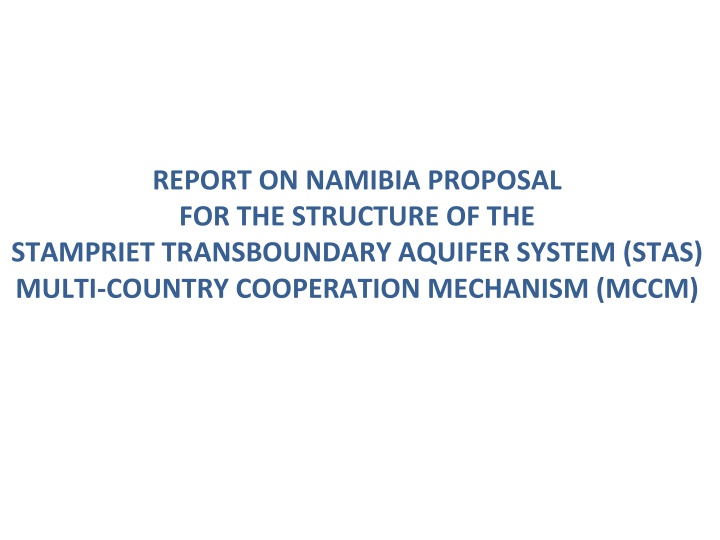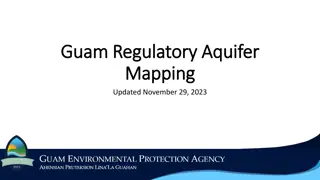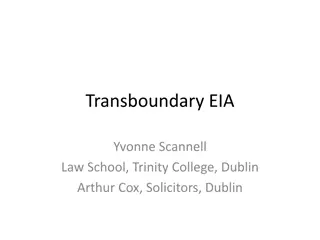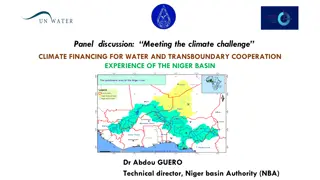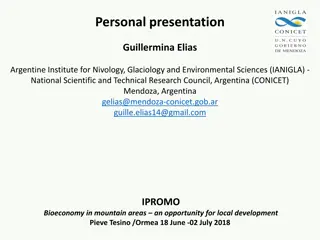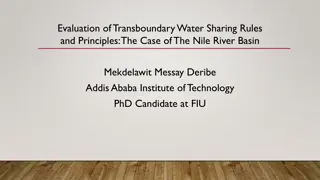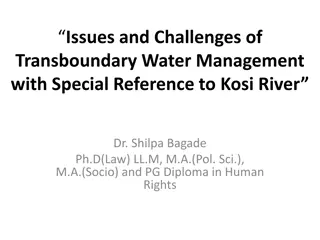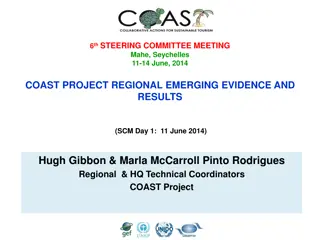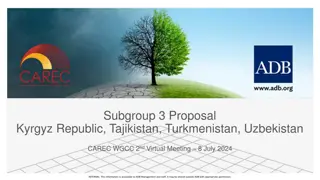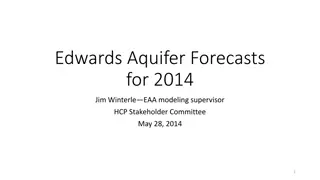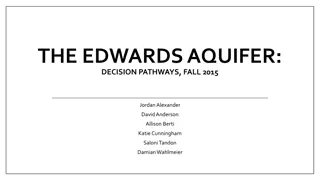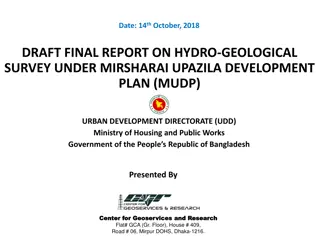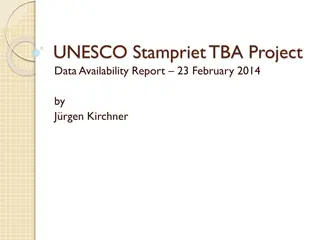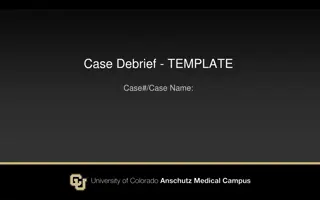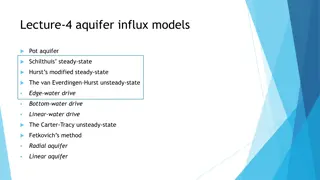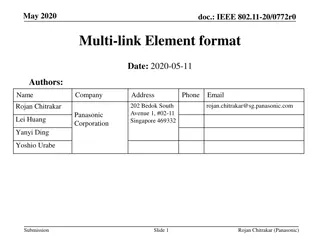Proposal for the Stampriet Transboundary Aquifer System Multi-Country Cooperation Mechanism
This report outlines Namibia's proposal for the structure of the Stampriet Transboundary Aquifer System, focusing on establishing a Multi-Country Cooperation Mechanism for sustainable management. The proposal involves nesting the GGRETA project under ORASECOM's Ground Water Hydrology Committee for enhanced coordination and institutionalization of cooperation over the aquifer system.
Download Presentation

Please find below an Image/Link to download the presentation.
The content on the website is provided AS IS for your information and personal use only. It may not be sold, licensed, or shared on other websites without obtaining consent from the author.If you encounter any issues during the download, it is possible that the publisher has removed the file from their server.
You are allowed to download the files provided on this website for personal or commercial use, subject to the condition that they are used lawfully. All files are the property of their respective owners.
The content on the website is provided AS IS for your information and personal use only. It may not be sold, licensed, or shared on other websites without obtaining consent from the author.
E N D
Presentation Transcript
REPORT ON NAMIBIA PROPOSAL FOR THE STRUCTURE OF THE STAMPRIET TRANSBOUNDARY AQUIFER SYSTEM (STAS) MULTI-COUNTRY COOPERATION MECHANISM (MCCM)
The Stampriet Transboundary Aquifer System (STAS) The Stampriet Transboundary Aquifer System (STAS) stretches from Central Namibia into Western Botswana and South Africa s Northern Cape Province, and lies entirely within the Orange-Senqu River Basin. The STAS covers a total area of 86 647km , of which 73% of the area is in Namibia, 19% in Botswana, and 8% in South Africa. The STAS was delineated based on the occurrence of geological formations belonging to the so-called Ecca Group within the Auob and Nossob river basins. 2 ephemeral rivers (Auob and Nossob) that never reach the Orange River
The GGRETA project Governance of Groundwater Resources in Transboundary Aquifers (GGRETA) project: Funded by the Swiss Agency for Development and Cooperation (SDC) Implemented by UNESCO International Hydrological Programme (IHP) Phase 1 (2013-2015): In-depth assessment of the STAS Phase 2 (2016-2018): Capacity-building modules on groundwater modeling, legal and institutional, and gender issues Development of the STAS numerical model Set the baseline for institutionalizing cooperation over the STAS
Rationale of the Namibia proposal for the structure of the STAS MCCM Nesting GGRETA project current structure into ORASECOM Ground Water Hydrology Committee (GWHC)
ORASECOM COUNCIL ORASECOM Structure ORASECOM TASK TEAMS SECRETARIAT LEGAL COMMUNICATIONS FINANCIAL TECHNICAL SADC-GMI (Invited Member) Ground Water Hydrology Committee Namibia Commissionner South Africa Commissionner Botswana Commissionner (current GGRETA project) Focal Points (Hydrogeology + Model) (Legal and institutional) (Hydrogeology + Model) (Legal and institutional) (Hydrogeology + Model) (Legal and institutional) (Gender) (Gender) (Gender) (STAS) HYDROGEOLOGY SUBCOMMITTEE
Rationale for a STAS MCCM Over-arching objective: Transitioning from GGRETA project-driven cooperation to institutionalized cooperation Short-term objective: Continue joint study & characterization of STAS, and generate flow of data feeding the STAS numerical model Reporting of activities at each meeting of the Ground Water Hydrology Committee (GWHC) Long-term objective: Move from data collection & exchange to joint strategizing/advising STAS countries on management of STAS resources Value-added: STAS vision/perspective consistency of direction & purpose of domestic actions joint control of data & information feeding the STAS numerical model
Core tasks Data collection & exchange Manage data flow feeding the STAS numerical model Attract donor funding Advise STAS countries on application of available/relevant SADC guidelines to the specifics of STAS Liaise with SADC-GMI and ORASECOM
Legal arrangements & Funding ORASECOM Council decision required Each STAS country would bear the cost of its representative on the Ground Water Hydrology Committee (GWHC)
Advantages No changes in ORASECOM structure required Focal points provide inputs to GWHC Commissioners Expeditiousness of implementation Current GGRETA project National Coordinators are replaced by GWHC Commissioners Leanness of institutional architecture: No secretariat facility is required Economies of scale: GWHC relies on support facilities available in ORASECOM Cost to STAS countries limited to GWHC meetings
Consideration of possible challenges STAS Countries will have to define next steps in order to evaluate if there are any challenges, and how to overcome them with the support of ORASECOM and UNESCO (through the GGRETA project).
